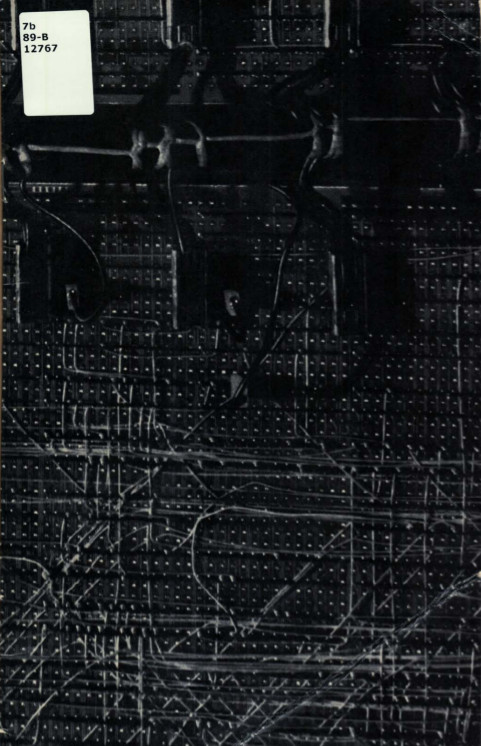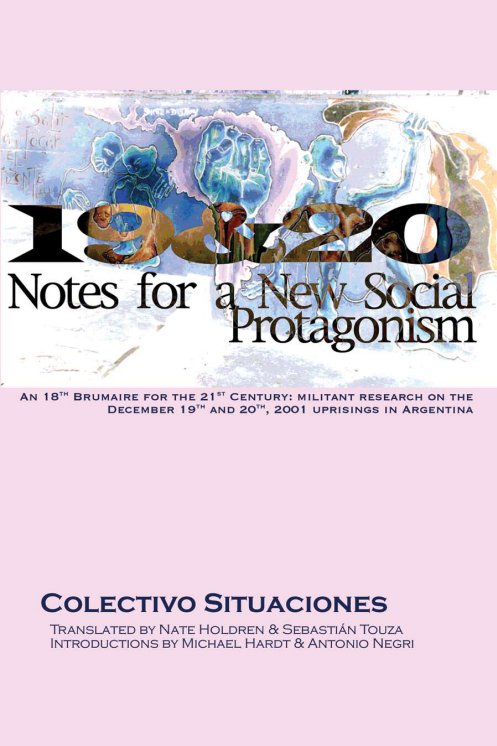Arte y Cibernética, catalogue (1970) [Spanish]
Filed under catalogue | Tags: · argentina, art, computer art, cybernetics, south america

A catalogue of the first computer art exhibition in Argentina, organised by Jorge Glusberg. With texts by Jasia Reichardt, Angel Kalenberg, Jorge Glusberg, Luis Osin, and Ricardo Ferraro.
Publisher Centro de Arte y Comunicacion (CAC), Buenos Aires, June 1970
via Pablo Colapinto
PDF (no OCR)
View discussion on cybernetics in Latin America (Yasmin mailing list)
Eduardo Molinari: Walking Archives: The Soy Children (2012)
Filed under book | Tags: · argentina, art, biotechnology, politics

Who are children of genetically modified soy production? What disowned bastards are produced by the hybridization of agri-business, biotech, capital, and culture?
To answer these questions the Archivo Caminante (Walking Archive) embarks on a trip through the opaque and strange world of genetically modified soya plants in Argentina in search of its inhabitants, forms and structures, languages and narratives: the forces that swirl around the soya rhizome. In the style of Gulliver’s Travels it makes visible some of the routes in the soya chain giving shape to a new international division of labor food policy in global semiocapitalism.
More than 50% of the cultivated lands in Argentina are for soya production, with 90% of that area covered by Monsanto products and representatives. This agrarian system and its results are only possible using Roundup herbicide, the brand name of Monsanto’s glyphosate. The rhizome formed by soya production dives deep into the Argentine society: it organizes new political alliances, and, above all, modifies the social and cultural structure of the country. Is there a transgenic culture inside semiocapitalism? Does the soyazation process modify culture and society, or is it the other way around, and soyazation is only possible in a transgenic culture?
Publisher Minor Compositions, an imprint of Autonomedia, Spring 2012
ISBN 978-1-57027-244-8
82 pages
PDF
View online (Scribd.com)
Colectivo Situaciones: 19 & 20: Notes for a New Social Protagonism (2002/2012)
Filed under book | Tags: · argentina, politics, protest, social movements

An 18th Brumaire for the 21st Century: militant research on the December 19th and 20th, 2001 uprisings in Argentina
In the heat of an economic and political crisis, people in Argentina took to the streets on December 19th, 2001, shouting “¡Qué se vayan todos!” These words – “All of them out!” – hurled by thousands banging pots and pans, struck at every politician, economist, and journalist. These events opened a period of intense social unrest and political creativity that led to the collapse of government after government. Neighborhoods organized themselves into hundreds of popular assemblies across the country, the unemployed workers movement acquired a new visibility, workers took over factories and businesses. These events marked a sea change, a before and an after for Argentina that resonated around the world.
Colectivo Situaciones wrote this book in the heat of that December’s aftermath. As radicals immersed within the long process of reflection and experimentation with forms of counterpower that Argentines practiced in shadow of neoliberal rule, Colectivo Situaciones knew that the novelty of the events of December 19th and 20th demanded new forms of thinking and research. This book attempts to read those struggles from within. Ten years have passed, yet the book remains as relevant and as fresh as the day it came out. Multitudes of citizens from different countries have learned their own ways to chant ¡Qué se vayan todos!, from Iceland to Tunisia, from Spain to Greece, from Tahrir Square to Zuccotti Park. Colectivo Situactiones’ practice of engaging with movements’ own thought processes resonates with everyone seeking to think current events and movements, and through that to build a new world in the shell of the old.
Originally published in Spanish as 19 y 20: Apuntes para el nuevo protagonismo social, Argentina, April 2002
Translated by Nate Holdren & Sebastián Touza
Introductions by Michael Hardt & Antonio Negri
Publisher Minor Compositions, an imprint of Autonomedia, 15 January 2012
ISBN 978-1-57027-216-5
274 pages
PDF (updated on 2014-9-14)
Scribd

